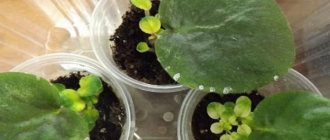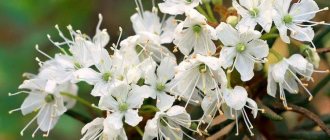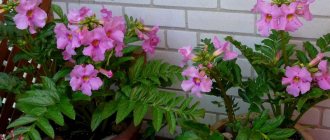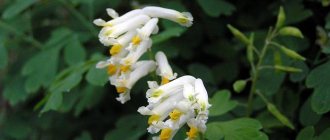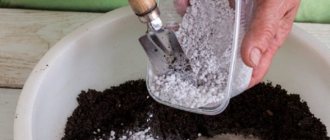The most common plant in landscape design today remains the unpretentious and hardy soft cuff - an amazing and unique creation of nature. Believe me, the appearance of this amazing plant in your garden will make the overall picture simply charming. In order for you to be able to grow soft cuffs on your own site, we will give several recommendations and reveal the main secrets: we will introduce the main varieties, talk about planting in open ground, as well as the main points of proper care.
Soft cuff: varieties and varieties
Perennial soft cuffs have a large root system, and the height of the crop reaches 35-40 cm. The leaves of the plant are simply magnificent: they are fan-shaped and taper towards the base.
After the rain, you can see how incredibly beautiful small droplets collect on them. In addition, through the stomata, the leaves of the soft cuffs release excess moisture, which is located in drops along the edge of the leaf plate. The flowers of the plant are small, collected in fluffy paniculate inflorescences. Its flowering period lasts from June to August, but sometimes it can bloom again in September. If you want to decorate your garden with a green carpet, plant a cuff
This genus of plants has a huge number of species, but they are all very similar to each other. There are the following main types of cuff:
- The cuff is soft. The flowers of this species are quite small and green-yellow in color. The most famous variety is Robusta (fast-growing, wild-like).
Soft cuff - Alpine cuff. The lobed leaves of these plants create peculiar hummocks on which yellow small flowers appear in the summer. All their decorative value lies precisely in the dark green leaves.
Alpine cuff - Hoppe cuff. A very miniature type of cuff, similar to an alpine one.
Hoppe cuff - Siberian cuff. Grows in Siberian meadows. These perennial plants have thick roots and reach 30 cm in height. Their kidney-shaped leaves are pubescent on both sides.
Siberian cuff
Due to their stunning appearance, they are all actively used in modern landscape design.
Medicinal properties
This wonderful plant contains ascorbic acid, lipids, phytosterols, lingin, tannins, various micro- and macroelements, bitterness, lecithin and many other useful substances.
Properties of the cuff:
- wound healing
- hemostatic
- anti-inflammatory
- astringents
- disinfectants
- diuretics
- choleretic
- calming
- antitumor
- thins mucus
- enhances lactation
- normalizes metabolism
- rejuvenates the skin and the entire body
- good effect on the cardiovascular system
- stabilizes hormonal levels
- normalizes blood sugar
- improves health
Used in the form of decoctions, tinctures, tea, plant juice and extract can also be used. Taken both internally and externally.
Planting a cuff in open ground
The soft cuff will surprise you with its fantastically beautiful leaves. Planting and caring for it is quite simple, since it is an unpretentious and well-growing crop.
These perennials are best grown in soft, indirect sunlight and afternoon shade. Loose, soft soils rich in humus will be favorable for planting.
The cuff takes root well and does not cause any trouble for the gardener
Planting is done in moist open ground. To make the plant develop more actively, humus and compost can be added to the soil. The distance between seedlings should be about 30 cm, since the soft mantle grows very quickly, and the process of transplanting it is quite complicated (due to the peculiarities of the root system).
Contraindications
There are no side effects reported at this time. However, there are contraindications to the use of the cuff.
First of all, these are people prone to severe allergic reactions, as well as children under 16 years of age.
You also need to be extremely careful in the amount of its use; excessive consumption can cause severe intoxication of the body, an allergic reaction, dyspepsia, and frequent urination.
Plant care
To ensure that growing soft cuffs brings you excellent results, you should follow a few simple rules and care tips:
- at the end of the flowering period, caring for these plants involves cutting off yellow leaves and inflorescences;
- in the fall, the plants are mulched with peat or fallen leaves (this will help the cuffs easily endure the cold winter season).
Be sure to cover the cuff before the onset of winter cold
Attention! Excessive watering of the plant can cause root rot. Provide the soft cuff with a good drainage system.
Application
In cooking
Cuff leaves are quite often used in cooking. And all because they contain a significant amount of ascorbic acid. They are added when preparing soups, salads and used instead of cabbage. In this case, it is best to use young leaves that have not yet unfolded. And it is advisable that this plant grows in the shade, and not in the sun, the taste will depend on this. Older plants can impart a bitter taste to dishes.
In medicine
Quite often, the cuff is used for gynecological purposes. Thanks to this plant, you can regulate the menstrual cycle, cure infertility and even maintain pregnancy in some cases. But it is important to understand that the cuff can be used for such purposes only under the supervision of the attending physician.
Teas from this plant can also help reduce the manifestations of type 2 diabetes. Tinctures can improve the functioning of the intestines and pancreas, and normalize sugar levels.
If you take the plant without having any health problems, you can saturate your body with minerals, vitamins and other beneficial substances.
When losing weight
The cuff is also actively used for weight loss. Due to the fact that the plant contains a large amount of flavonoids, it can perfectly smooth the skin. Therefore, an anti-cellulite agent is made from the cuff.
To do this, you will need to mix 25 grams of dry plant with 15 grams of dried parsley. Pour boiling water over all this and leave for 1.5 hours. Next, the mixture is filtered and consumed twice a day, morning and evening, 15 grams each.
At home
In early spring, various soups and salads are made from the shoots and leaves of the cuff. The plant is also harvested for the winter and used for cooking in the future.
In cosmetology
If you want to get rid of cellulite externally, then pour 30 grams of dry herb with 300 grams of boiling water and let it brew for 1 hour. Then soak gauze in the infusion and apply to problem areas.
Cuff Reproduction
Reproduction of the soft cuff can be done using two methods:
- sowing seeds;
- dividing the bush.
Dividing a cuff bush
Propagation of these perennial plants by dividing the bush is carried out in spring or autumn. The bush is carefully dug up, divided and planted in new places.
Advice. It is best to propagate soft cuff varieties by seeds. The plant has a large and densely woven root system. Digging it out of the ground is quite labor-intensive; in addition, the rhizome can be damaged.
Seeds are sown in well-moistened soil. After just a year, the seedlings can be moved into open ground and further grown there. The optimal time for sowing will be late autumn.
Growing from seeds
The flower can be grown from seeds. If you want to try propagating mantle from seeds, sow outdoors immediately after all frosts.
Barely cover the seeds and water them well. You can also start the seeds indoors a couple of months before your transplant date. It takes about three to four weeks for the seeds to germinate, so be patient.
Given that the flower is easy to grow from seed and is capable of free-seeding itself, many gardeners start with at least one plant and wait to see how well it self-seeds.
Diseases and pests
Fortunately, this plant is quite disease resistant. Improper care of the soft cuff often leads to the appearance of powdery mildew on it. When planted under trees, it may be affected by black rust. Also, the leaves of the plant can be damaged by snails or slugs.
Very often the cuff is attacked by snails
High humidity and lack of sun often cause mold to appear on the stems and leaves of the soft mantle. Transplanting the plant to a suitable place and treating it with fungicidal preparations will help get rid of this.
Trimming
If given the opportunity, the cuff can easily become out of control. To avoid this, cut flowers as soon as they begin to wilt to prevent self-seeding.
If a plant begins to grow in an unwanted area, pull it out quickly. If necessary, the entire plant can be pruned; this will stimulate new growth and, in some cases, a second bloom.
Soft cuff: combination with other plants
In landscape design, soft cuffs are often used in combination with other plants. Many cultures harmonize perfectly with it. For example, wonderful combinations are formed from soft mantle and white daisies, blue cornflowers, red heucheras, blue delphiniums, etc. They create a very bright decorative cover that requires virtually no maintenance.
Cuff in landscape design
Suggested Use
Thanks to the description of the mantle, it is usually used as a ground cover and creates a beautiful edging when stored in limited quantities.
Cut flowers are ideal in floral arrangements, yellow flowers go well with anything.
It is also great for use in containers, pots and garden plots.
Soft cuff in landscape design
It is difficult to even imagine modern landscape design without the use of various varieties of cuff. In flower beds, it perfectly smooths out sharp transitions between different bright colors and is a “welcome guest” in plantings of a pastel palette of shades. It is not recommended to place it along the contour of the lawn. It is best to plant soft cuff in the foreground of flower beds that are adjacent to paths or ponds. In addition, it is often used in ceremonial compositions. This plant can easily decorate rock gardens, alpine slides, and ridges.
Bloom
It usually blooms around June. As you can see in the photo of the cuff, the flowers are showy and look great dried and cut. The foliage is semicircular with grey-green leaves, looks good all season long and makes a nice ground cover.
In late spring and early summer they produce delicate yellow-green flowers covered in chartreuse.





